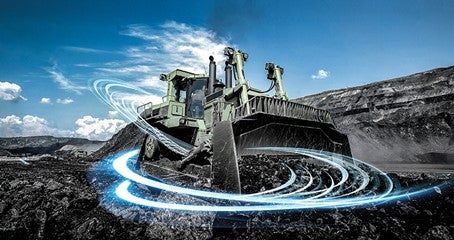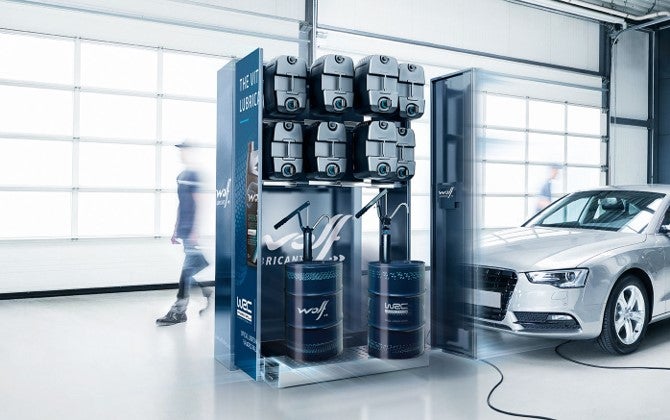
Heavy-Duty engine lubrication: blending the right oil for your fleet

The engine components within heavy-duty off-road vehicles are big, heavy and in dire need of advanced lubrication. Get to know the properties that allow you to efficiently lubricate your fleet within this blog.
Heavy-duty off-road jobs are very diversified, and so are the vehicles used to carry them out.
Articulated dump trucks, backhoe loaders or tractors, all of these unique pieces of equipment have different designs and encounter different operational conditions during their daily operations. As a fleet owner it is of utmost importance to increase the uptime of your machinery to maximise the return on investment of these heavily-diversified machines, and lubricants can help you achieve this.
This series of blogs will cover the broad topic of heavy-duty engine lubrication. In this blog, we start off by showing you three critical oil properties for efficient heavy-duty engine lubrication. Each property has its own function and suits the needs of specific parts, directly improving the daily mobility of your business.
1. Friction control
The amount of fuel necessary to power a heavy-duty vehicle is high, so cutting down on fuel consumption is essential. The large amount of moving parts within the engine hold the potential of causing a lot of friction, making efficient engine lubrication critical for modern mobility.
The camshaft, rockers and valves are parts of the valve train. All of these moving components hold the potential of causing a lot of friction when badly lubricated. A low viscosity oil containing balanced friction reducing additives allows all surfaces to slide with minimal friction, even under boundary lubrication conditions.
2. Wear control
Worn down engine components break more easily and operate less efficient than their wear-free counterparts. Engine oils contain extreme pressure and/or other anti-wear additives to keep all engine parts wear free. But be cautious! These additives can cause additional oxidation, so make sure to only use oils from an accredited lubricant blender with extensive know-how.
Additives are a great way to reduce friction, but the right viscosity is also vital for complete wear control. Too runny lubricants can’t prevent the metal surfaces from wearing each other down while a too solid lubricant will increase fuel consumption and can’t reach the critical areas of lubrication in time after you start the engine. A great example of this balance is found within the massive bearings of heavy-duty engines.
Vehicles equipped with heavy-duty bearings require oil that has the right load-carrying capacity to prevent the rotating elements from wearing and seizing. Engine oil with low fluidity and advanced anti-wear additives keeps all components protected while minimising the friction within the bearing.
3. Sludge and deposit control
Dirt, dust and debris coming from inside or outside the engine are always looking for a place to settle and form deposits. A stream of air or oil carries these particulates until they encounter the right conditions to form deposit.
Different types of particulates form deposits under different conditions, let us use the piston as an example:
• Piston crown: solid deposits can form on top of the piston crown. These troublesome formations trap the heat generated within the combustion chamber.
• Piston skirt: varnish hinders the cooling of the piston, directly increasing friction & wear.
A balanced engine oil containing detergents and dispersants will prevent deposits from forming and will actively remove existing deposits, directly increasing the lifespan of the engine. Getting those extra hours out of each vehicle within your fleet will increase return on equipment investment.
Getting the most out of your oil investment
Offering complete engine protection and optimising the performance of the engine is crucial, but don’t underestimate the importance of protecting the original composition of the engine oil in-between oil changes.
The oil’s resistance to oxidation determines how long the fluid retains its properties. Carefully balanced oxidation inhibitors can heavily reduce the rate at which the fluid oxidises. Oxidised engine oil loses its lubricating properties, meaning that you will have to change your oil on a regular interval to make sure that your heavy-duty machinery remains completely lubricated.
A second factor that affects the rate at which engine oil deteriorates is shear.
Longer viscosity modifying molecules (like those found in viscosity modifying additives) are broken down into smaller molecules by exposing them to high levels of pressure, lowering the lubricant’s viscosity. Be sure to read our blog on the latest generation of viscosity modifiers with increased shear resistance if you want to know more about these innovative molecules.
A highly oxidation and shear resistant fluid will allow you to extend the drain interval of your engine oil. Engine oil categories for heavy-duty off-road applications contain regulations about drain intervals, allowing you to easily see the advised drain intervals of all heavy-duty engine oils. Heavy-duty engines can contain up to 150 liters of oil, so ensuring that the engine oil retains its vital lubricating properties will directly increase the profitability of your fleet.
In the upcoming heavy-duty blogs we will show you the official specifications and regulations for heavy-duty engine oils and the latest heavy-duty engine trends. Be sure to keep an eye out on our blog or our newsletter to stay on top of your heavy-duty lubrication management!
Summary:
• Heavy-duty engines require specialised lubricants to stay in optimal shape.
• Efficient friction reduction helps optimising fuel economy.
• Controlling engine wear allows you to extend fleet uptime.
• Advanced sludge and deposit control extends engine life.
• Oils can be formulated to retain their lubricating properties longer.
• Keep an eye on the blog to learn about heavy-duty specifications and trends.

